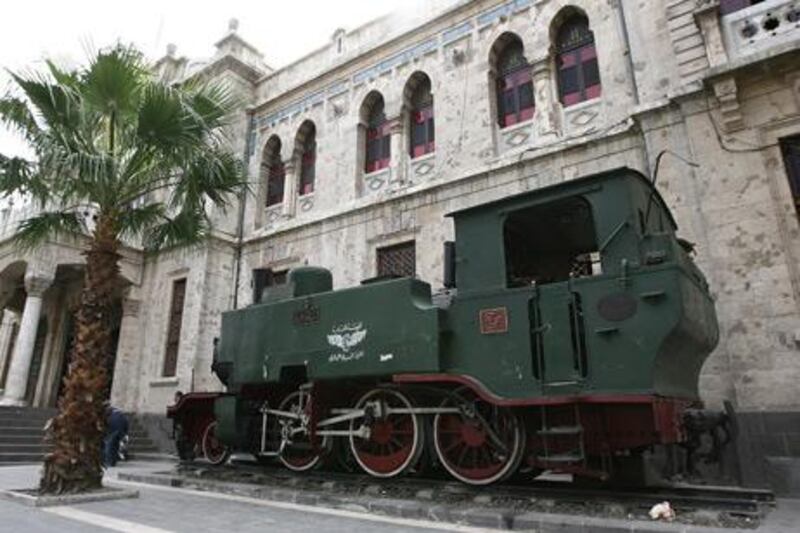Once whistling and puffing out steam, the majestic train of the Hejaz Railway met its demise during the Arab Revolt of the First World War, when Bedouin tribes led by Lawrence of Arabia launched relentless attacks against this railway.
Some of the battered carriages from those attacks are still around; 90-year-old rusting shells buried under layers of sand along a route that once transformed the Arab world.
Designed in the early 1900s for the crumbling Ottoman empire by German engineers using funds from pious Muslims across the world, the Hejaz Railway was first and foremost for pilgrims, easing their travels over a 1,600 kilometre road between Damascus and Medina for the annual Haj pilgrimage. The Hejaz was in many ways an embodiment of pan-Islamism. It was a turning point for pilgrims, transforming a difficult journey that once took over two months into a 55-hour ride on what the Bedouins called the "Iron Donkey".
At the time, the West was highly sceptical about whether the Hejaz Railway would ever materialise, and the project was dismissed by British officials as a "fantastic" scheme. But the Ottoman railway defied sceptics, and was eventually completed at a total cost of 4.25 million Turkish Liras.
It has taken the Middle East 91 years to revisit this vision of a pilgrimage railway. Last Haj, Saudi Arabia successfully launched the Al Mashaer Al Muqadasah, better known as Mecca Metro, linking Mina, Arafat and Muzdalifah with Mecca. It is also investing millions of dollars on the construction of the Haramain Fast Rail, which will link the two holy cities of Mecca and Medina with Jeddah.
This week, railway professionals gathered in Abu Dhabi for a major industry conference, and I got the chance to meet Middle Eastern "railway men" who maintain that this field is a "man's pride and joy".
Old and young men from various fields of engineering, architecture and even artistry were almost giddy when discussing their visions for either existing or future railway projects. The experts, whether Emirati, Saudi or Iranian, put aside political differences to discuss their common passion for the railway. And all agreed that a regional railway network, starting with the pan-GCC one that is expected to be operational in 2016, will reform this region, and help bring neighbours closer together.
A Yemeni delegation was also present, and expressed hope that they too would be included in this grid, boldly claiming that this would "change our lives forever".
While trains are already operational in some parts of the Arab world like Syria, Libya, and Egypt, it would require significant reforms and upgrades for them to become the first choice of national transport. Iranian trains are my favourite in the region, as they employ a modern system, but also maintain a cultural touch by allowing for a "tea coach" where locals can drink their saffron tea, recite poetry and have discussions.
As the move to faster trains gathers pace, an appreciation for the old steam engines endures, and several can still be found at the original Medina Station from the Hejaz Railway that underwent restoration in 2001. The station covers an area of 540,000 square metres, and includes 12 separate architectural units. It is a magnificent structure and a stands as reminder of what the Middle East had long before a European Union rail system existed.
TE Lawrence, who actually travelled on the Haifa-Damascus extended branch of the Hejaz Railway in 1911, best captured the love affair between man and railway in his own account in Seven Pillars of Wisdom.
"A herd of sheep and goats in charge of a little ragged boy issued out towards us," he wrote. "Before he reached the foot of the hills there came a loud whistling down the valley from the north, and a tiny, picture-book train rolled slowly into view across the hollow sounding bridge and halted just out the station, panting out white puffs of steam."
The day that a regional train network is introduced can't come too soon. Only when the puffs of steam give way to the roar of locomotives will regional transportation truly emerge over the horizon.





